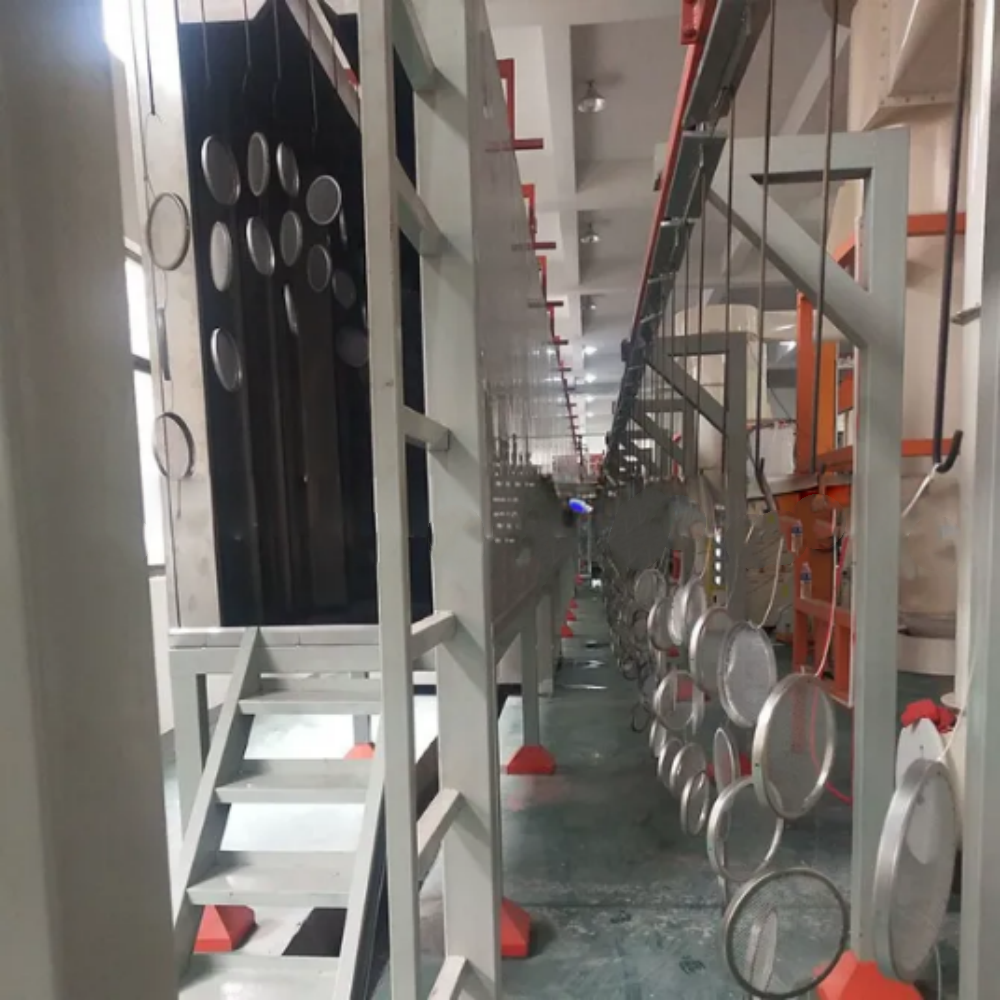Understanding the Powder Spraying System in Toy Manufacturing
Key Components of a Powder Spraying System
Powder spraying systems typically have four main parts working together: material feed systems, electrostatic spray guns, curing ovens, plus various control units. The feeding part handles getting the powder where it needs to go through pumps and hoses. Meanwhile those electrostatic spray guns give the powder particles a charge so they stick evenly onto whatever surface they're coating, especially important when dealing with small plastic toys that need smooth finishes. These days many newer setups come equipped with smart sensors connected to the internet of things. They keep track of things like pressure levels, temperatures inside the oven, and how fast the powder is flowing. This real time monitoring lets operators make adjustments on the fly, which means better quality coatings and fewer rejects from inconsistent application.
Role of the Powder Spraying System in Achieving Stable Coating Quality
Keeping coating thickness within about 0.05 mm variance matters a lot when it comes to getting those smooth, flawless finishes. When there's too much fluctuation in how the powder gets applied or charged, we start seeing problems like that annoying orange peel look or spots where nothing sticks properly. Looking at numbers from around 1,200 toy factories across the country, those places that switched to better powder spray systems saw their rejection rate drop by nearly two thirds compared to old school hand spraying techniques according to Surface Finishing Journal last year. Makes sense really why stable systems just work better for quality control purposes.
Integration of Powder Spraying Systems in Toy Production Lines
Modern powder spray systems fit right into production workflows, matching up with conveyor belt speeds during both molding and assembly phases. According to some recent research in the field, these automated batch booths can handle around 300 to maybe even 500 plastic components each hour while still keeping packaging operations running smoothly. The real advantage comes from hybrid setups that let manufacturers spray multiple materials at once, like ABS alongside polypropylene, through separate feeding lines. This capability makes all the difference when creating toys that need different material properties in various parts of the product.
Optimizing Powder Consistency and Dispersion for System Stability
Moisture Control in Powder to Prevent Clumping
Storing powder in environments with relative humidity below 40% reduces clumping risks by 62%. Silica-based additives enhance particle surface resistance to moisture, improving flowability by 34% over untreated powders. In variable climates, advanced drying hoppers equipped with real-time sensors automatically adjust dehydration cycles, ensuring consistent powder quality before application.
Temperature Management During Spray Processing
Maintaining powder delivery systems at 25–30°C prevents premature curing and preserves optimal viscosity. Deviations beyond ±2°C have been shown to increase coating defects by 19%, particularly on curved toy surfaces. Insulated hoses combined with PID-controlled heaters deliver 99.7% thermal stability during extended 8-hour production runs, supporting consistent deposition.
Maintaining the Ideal Powder-to-Air Ratio for Uniform Coating
A 4:1 powder-to-air ratio achieves 95% coverage on complex toy molds while minimizing overspray. Systems featuring dynamic dispersion technology automatically adapt to flow variations, reducing material consumption by 22% compared to fixed-pressure setups. This balance ensures efficient use of powder without compromising coating integrity.
Managing Raw Material Variability in the Powder Spraying System
To prevent clogging and uneven coatings, incoming powder batches should be tested for particle size distribution (D50: 28–32 µm) and bulk density (0.45–0.55 g/cm³). Manufacturers using AI-driven analysis for raw material evaluation report a 40% reduction in adjustment downtime when switching between polymer types, enhancing responsiveness and throughput.
Precision Atomization and Nozzle Maintenance for Consistent Output
Spray Pattern Dynamics and Coating Thickness Control
Uniform coating thickness depends on precise control of spray pattern geometry. Optimal results are achieved by aligning nozzle distance (15–30 cm), angle (70–90°), and airflow (2–4 bar) with part dimensions. Poorly managed patterns increase material waste by 18% and contribute to surface defects like orange peel, especially on contoured toys (Surface Coatings Journal 2023).
Optimal Atomization Settings for Toy Surface Coatings
Atomization pressure (0.5–1.2 MPa) and nozzle orifice size (0.8–2.5 mm) must be tuned to produce droplets of 30–80 µm for effective deposition. While finer droplets improve adhesion, they also raise overspray risk. Robotic applicators equipped with real-time viscosity sensors reduce defects by 32% compared to manual operations, offering superior control and repeatability.
Nozzle Clogging Prevention and Troubleshooting Techniques
Preventive measures such as bihourly purge cycles and inlet filters with <10 µm retention significantly reduce nozzle blockages. Ultrasonic cleaning every 500 operational hours decreases unplanned downtime by 41% (Bete Industries). Standard troubleshooting protocols should address:
- Partial obstructions causing asymmetric spray patterns
- Flow deviations exceeding 5% due to wear
- Airlock formation in feed lines
Independent Control of Powder and Air Volumes for Fine-Tuning
Advanced systems with independent regulation allow separate adjustment of powder feed rates (5–50 g/min) and atomizing airflows (100–400 L/min). This flexibility enables operators to fine-tune performance when transitioning between powder types—particularly important when handling denser metallic pigments versus lighter polymer-based powders.
Airflow and Thermal Optimization in the Drying Process
Balancing Airflow and Drying Gas for Effective Particle Formation
Getting consistent coating quality really depends on how well we manage the airflow in these systems. According to some recent computational fluid dynamics studies from MDPI back in 2023, when chambers are designed properly, they cut down those pesky recirculation areas by about forty percent. This makes the drying gas mix better with the particles during processing. The sweet spot for airflow speed seems to be somewhere between 12 and 15 meters per second. At this range, things work pretty well for both evaporation rates and keeping particles stuck where they need to be. If the air moves too slowly though, parts might not dry completely. But crank it up too high and there goes all that nice material flying out as overspray instead of settling on the product.
Real-Time Gas Monitoring for Spray Drying Stability
Integrated IoT sensors monitor gas humidity (±2% accuracy) and temperature (±1.5°C precision) every 0.5 seconds, preventing thermal runaway. A 5°C deviation can increase defect rates by 18% (Vina Nha Trang 2024). Facilities using real-time monitoring reduced moisture variation across toy surfaces from 8.2% to 1.7% standard deviation, according to a 2024 airflow optimization study.
Energy Efficiency and Thermal Consistency in Drying Chambers
The right kind of baffling can boost energy savings somewhere around 20% or so while keeping temperatures pretty consistent throughout different drying areas, usually within about three degrees Celsius. The circulation fans come equipped with variable frequency drives that tweak their power output according to what the production line actually needs at any given moment. This matters a lot when making toys with all sorts of intricate shapes since they need specific drying conditions. Chambers lined with ceramic fiber hold onto most of the heat generated during processing, something like 89% if we're being precise. What this means is that factories running large batches save quite a bit on electricity bills compared to older systems with plain steel walls that just let all the heat escape.
Ensuring Reliable Powder Delivery and Long-Term System Performance
Powder Pump Functionality and Continuous Feeding Reliability
Precision-engineered pumps are vital for consistent powder delivery. A 2023 ASM International study found that disk-type feeders with laser-monitored groove filling reduced flow deviations by 62% compared to conventional screw-driven models. These advancements minimize underfeeding and overfeeding, directly improving both coating quality and cost efficiency.
Calibrating Pumps to Minimize Waste and Maintain Flow Stability
Monthly calibration ensures ±2% dosing accuracy across production batches. Critical parameters include feed rate (adjusted for toy size/shape), nozzle pressure (to limit overspray), and hopper agitation (to prevent settling). According to the 2025 Powder Coatings Industry Survey, facilities using IoT-enabled calibration reduced material waste by 45% while achieving 99.3% coating uniformity.
Case Study: Resolving Intermittent Feed Issues in a Toy Factory
A toy manufacturer cut production downtime by 78% after addressing two key pump-related failures:
| Issue | Solution | Result |
|---|---|---|
| Wear on rotor seals | Installed ceramic-reinforced seals | 300-hour MTBF improvement |
| Air ingress in lines | Upgraded to pressure-balanced hoses | 92% fewer flow fluctuations |
Scheduled Maintenance and Cleaning Routines for System Longevity
Proactive maintenance prevents 83% of unplanned shutdowns (Bolair Engineering, 2025). Recommended routines include:
- Daily: Nozzle purge cycles and pump lubrication checks
- Weekly: Filter replacement and line pressure validation
- Monthly: Full system flush with anti-caking agents
Data-Driven Adjustments Using IoT Sensors and Feedback Loops
The latest equipment can detect changes in viscosity or sudden humidity jumps within about three seconds flat. Plants that have adopted predictive analytics are seeing some pretty impressive results these days - around 30 percent less need for maintenance work, nozzles lasting roughly 15% longer than before, and saving about 5.7% on yearly energy costs. These improvements definitely put them on track toward those 2032 environmental targets most companies are aiming for. When manufacturers combine solid mechanical design with intelligent diagnostic tools, they end up producing consistently good quality products while keeping shipments rolling out on schedule even in the tough world of toy manufacturing where competition is fierce.
Frequently Asked Questions
What are the main components of a powder spraying system?
Powder spraying systems typically consist of material feed systems, electrostatic spray guns for charging the powder, curing ovens, and various control units for monitoring and adjustments.
How do powder spraying systems improve coating quality in toys?
By ensuring a stable and uniform coating, these systems minimize defects such as orange peel and enhance the smoothness of plastic toy surfaces, reducing the rejection rate significantly.
What role do IoT sensors play in powder spraying systems?
IoT sensors provide real-time monitoring of variables like pressure levels and temperature, allowing for immediate adjustments, which ensure consistent application and quality coatings.
How important is maintaining the powder-to-air ratio?
A well-maintained 4:1 powder-to-air ratio is crucial for achieving over 95% coverage on toy molds, helping minimize overspray and material waste.
Table of Contents
- Understanding the Powder Spraying System in Toy Manufacturing
- Optimizing Powder Consistency and Dispersion for System Stability
- Precision Atomization and Nozzle Maintenance for Consistent Output
- Airflow and Thermal Optimization in the Drying Process
-
Ensuring Reliable Powder Delivery and Long-Term System Performance
- Powder Pump Functionality and Continuous Feeding Reliability
- Calibrating Pumps to Minimize Waste and Maintain Flow Stability
- Case Study: Resolving Intermittent Feed Issues in a Toy Factory
- Scheduled Maintenance and Cleaning Routines for System Longevity
- Data-Driven Adjustments Using IoT Sensors and Feedback Loops
- Frequently Asked Questions

